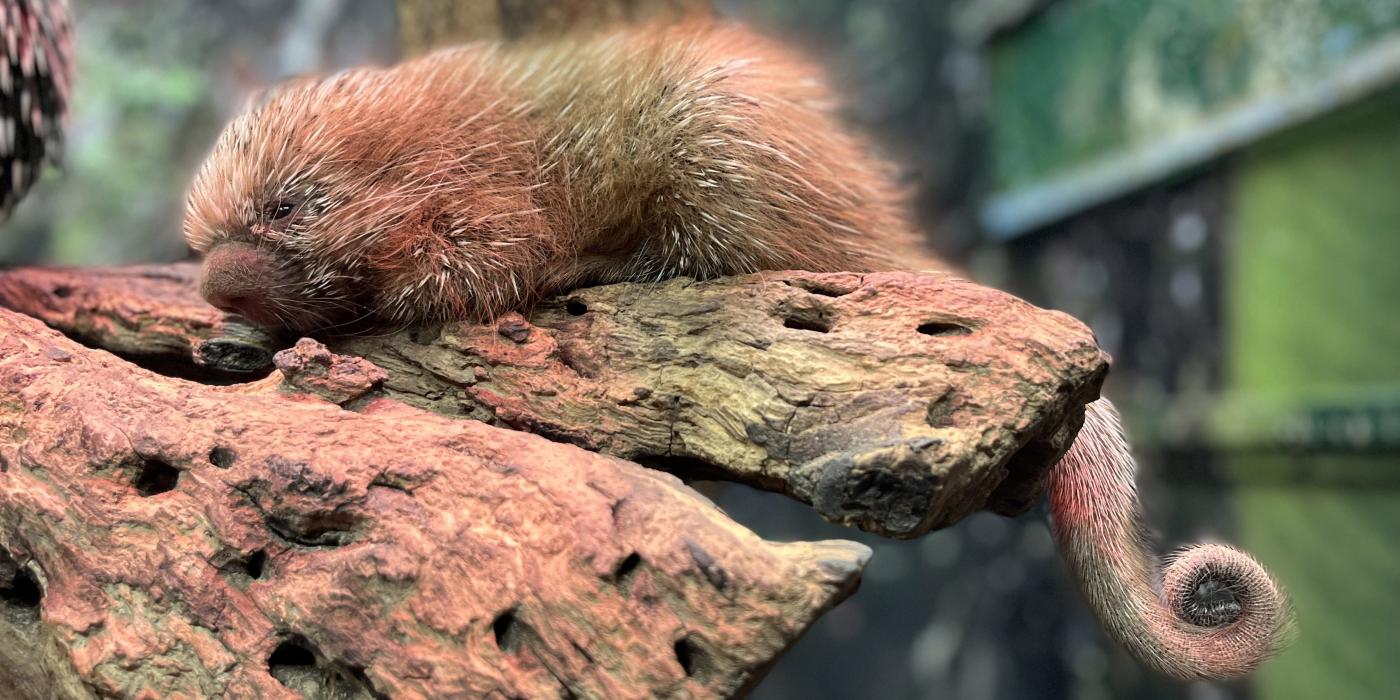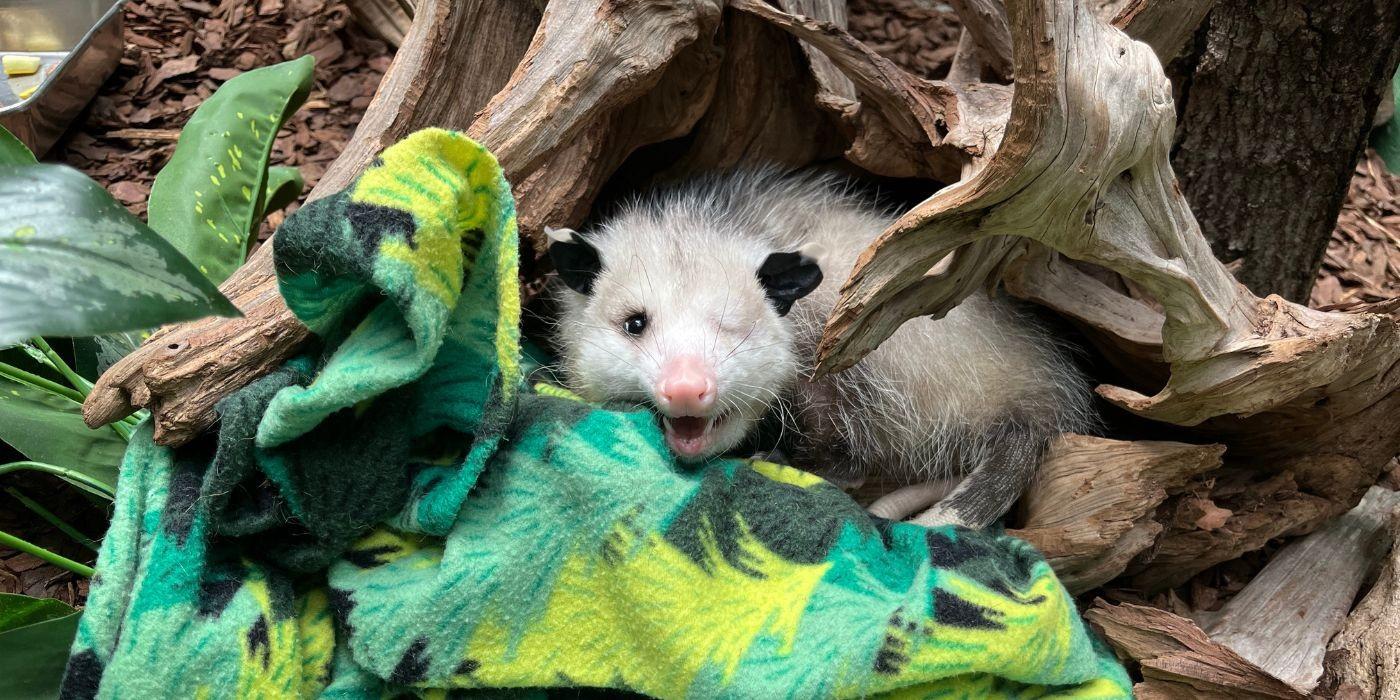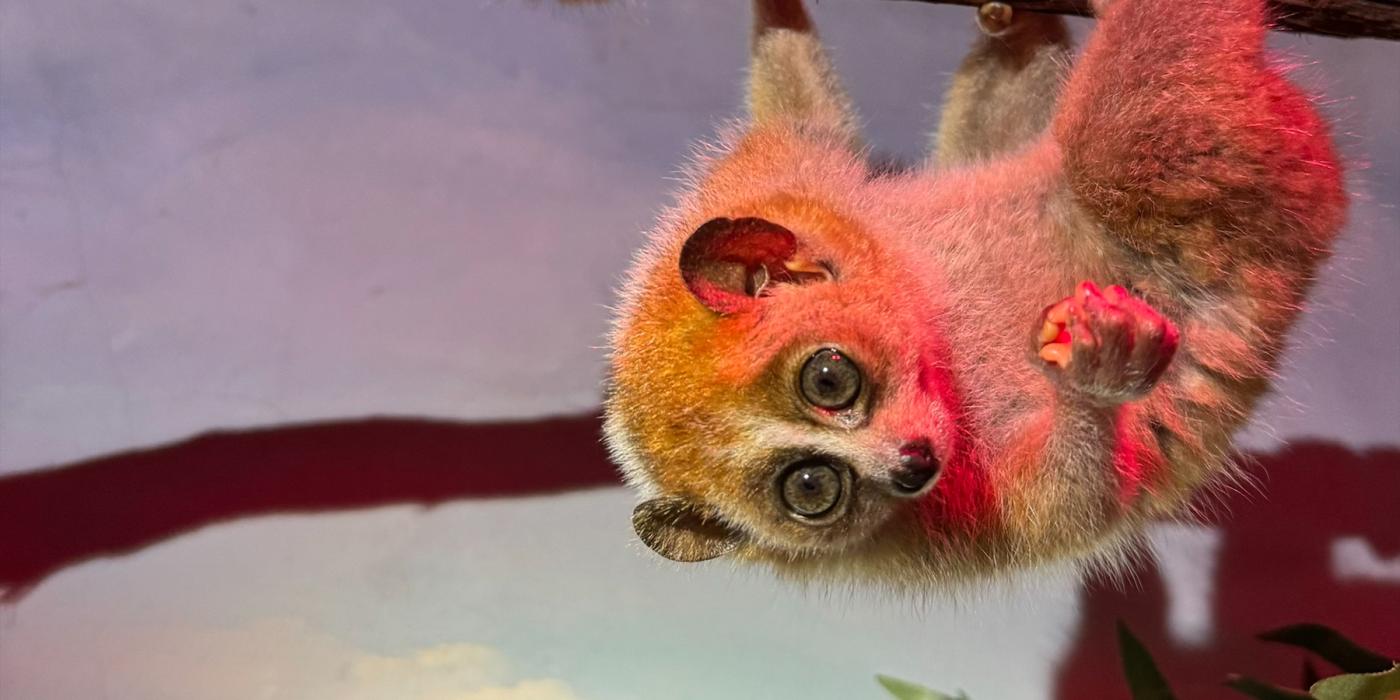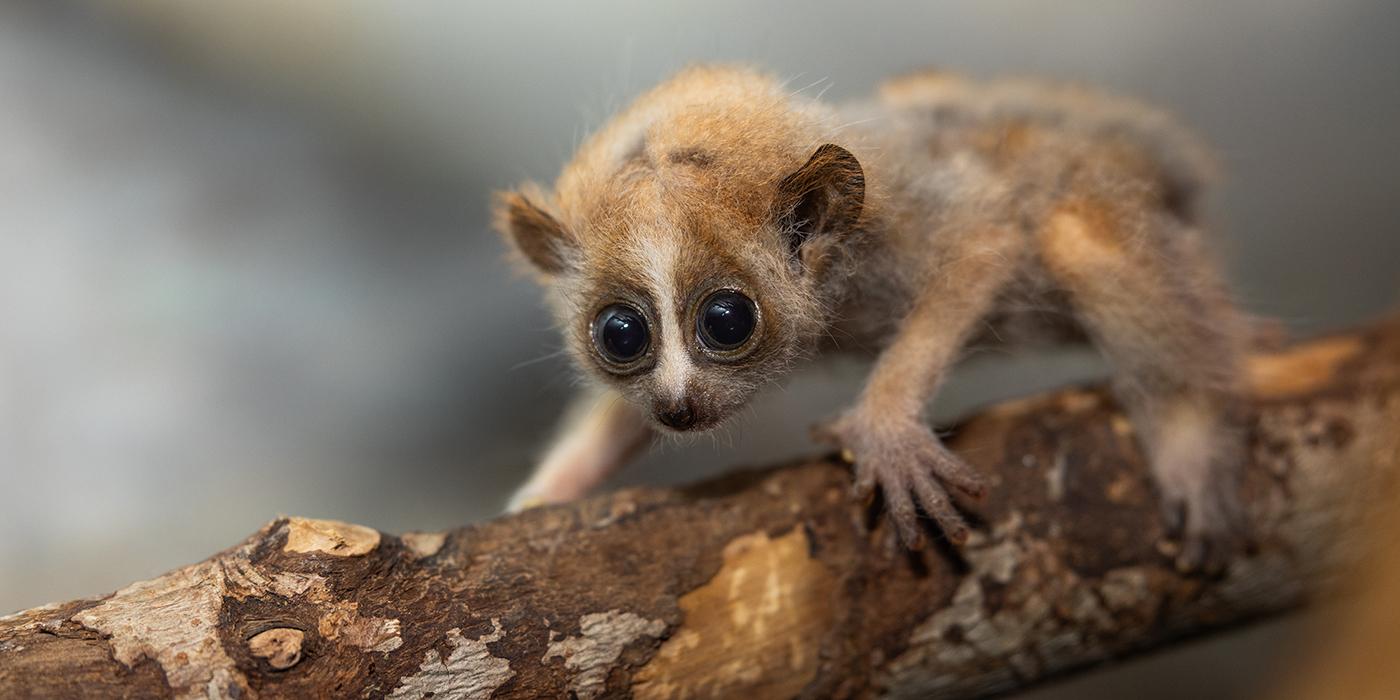Meet Our Prehensile-Tailed Porcupette, Fofo!
Don’t be put off by Fofo’s prickly appearance! As his name implies, our 8-week-old prehensile-tailed porcupette is as “cute” as can be! Get to know Fofo in this Q+A with Small Mammal House keepers Maria Montgomery and Mimi Nowlin.
What is Fofo’s personality like?
Fofo’s personality is just like his name, which means “cute” in Portuguese! He seems to take after his mother, Beatrix. He is calm, gentle and good-natured, and she is super laid-back. They have very compatible personalities.
Prehensile-tailed porcupines are nocturnal, so they are most active at night. Most days, visitors will see Fofo sleeping on a piece of perching right next to Beatrix. He sometimes ventures out and sleeps on a branch just below her!
What do you enjoy most about working with Fofo?
Fofo is the fourth generation of prehensile-tailed porcupines born at the Smithsonian’s National Zoo. It’s wonderful to be a part of a breeding program that is helping the North American population thrive. We have contributed many offspring to the Species Survival Plan over the years.
Taking care of porcupettes is always a fun—and adorable—opportunity for us as keepers! Fofo doesn’t seem to mind interacting with keepers during the day whenever we bring them food, clean or place enrichment items in their habitat. He is also very relaxed when being handled.
How much does Fofo weigh?
Fofo weighs about 1.5 kilograms, or 3.3 pounds, and is growing every day! At birth, Fofo weighed 382 grams, or just under one pound. To monitor his growth, we weighed him every day until he gained above one kilogram, or 2.2 pounds. Now, we weigh him every other day.
These positive interactions help build and maintain Fofo’s trust in his keepers. We want him to acclimate to being handled so that when it comes time for a medical exam, he is comfortable and can voluntarily participate in his own health care. Adult prehensile-tailed porcupines weigh about 5 kilograms, or 11 pounds. Fofo will be fully grown by his first birthday!

Nancy McInerney, lab manager at the Zoo's Center for Conservation Genomics, holds a sample of prehensile-tailed porcupine Fofo's DNA, which she extracted from one of his quills.
How did you determine Fofo was male?
Newborn porcupettes, whether they are male or female, look anatomically similar until they reach 6 months of age. Using thick, protective gloves, we gently pet Fofo and gathered a few quill samples. Scientists at the Zoo’s Center for Conservation Genomics ran a DNA analysis on the quills for the gene linked to sex determination and determined we had a boy!
Are prehensile-tailed porcupettes born with quills?
Yes! At birth, porcupettes have black and white quills—they are just very small. The striking rust-colored hair they are born with is also quite sharp and helps them blend in with their environment. Similar to how a person’s fingernails get soft after a long swim, the quills are very soft and do not harm the mother at birth. They harden within minutes of being exposed to the air. Until the black-and-white quills grow larger and are able to provide a defense mechanism, the porcupette’s long, reddish-brown hair provides great camouflage in the tree canopy.
Porcupines are constantly growing new quills, which grow and fall out like hair. At the tip of each quill is a super sharp barb, which can hook into a predator if they get too close.
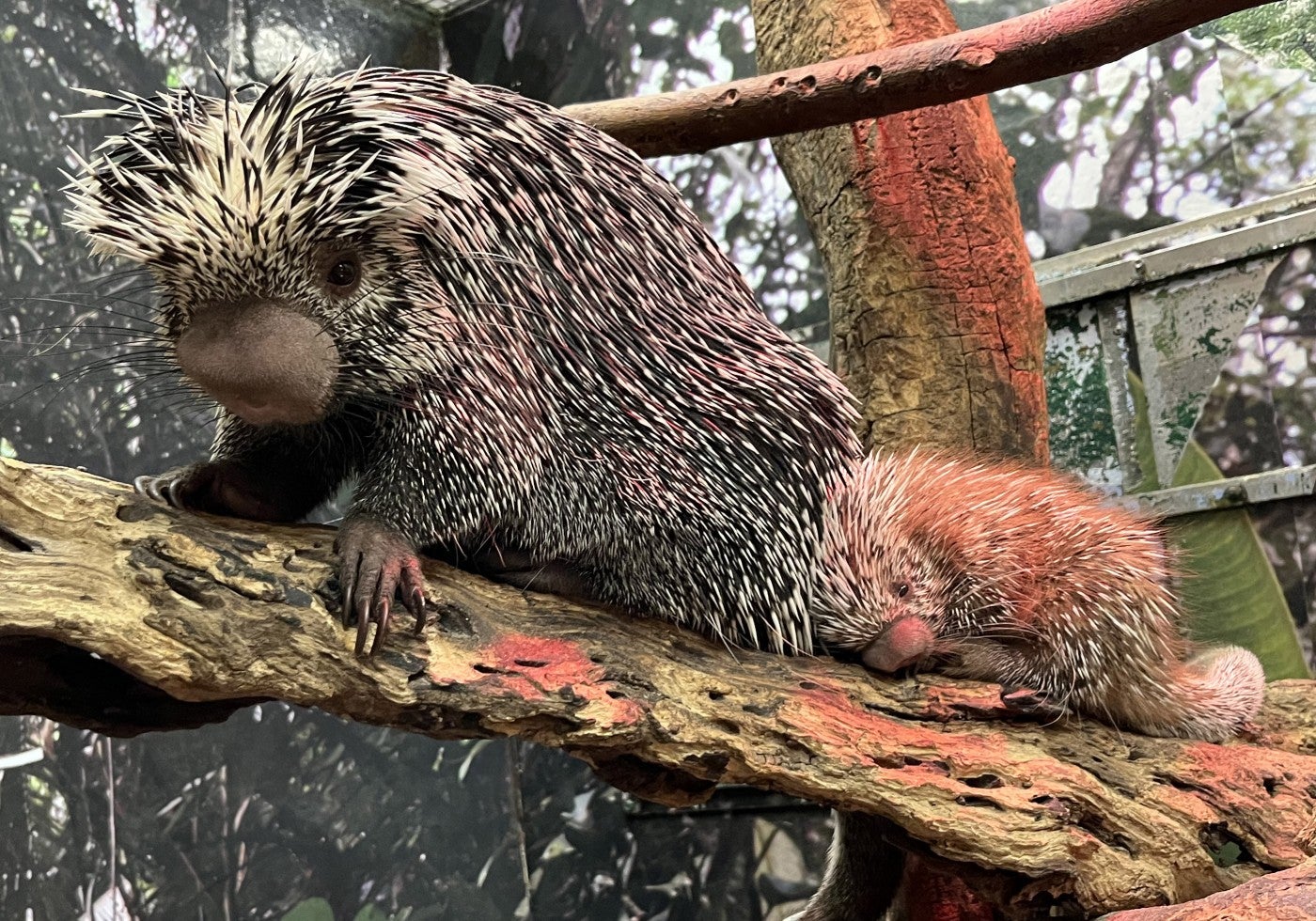
What’s a myth about this species you’d like to dispel?
Just because porcupines are prickly in appearance doesn’t mean they have an attitude! Many people assume they are aggressive, but most of the time they are gentle individuals who spend their time roaming the mid-canopy forest. Generally, they are not aggressive unless provoked.
What does Fofo eat?
Fofo is still nursing. Prehensile-tailed porcupettes begin weaning around 10 weeks old. When he was about a month old, we found smears of food in his quills, which indicated that he was investigating Beatrix’s food pan overnight. As part of their diet, our porcupines receive greens, rodent chow and a variety of fruits and vegetables. Fofo samples food when we offer treats to Beatrix. So far, he seems to like the standard porcupine favorites: corn kernels, banana, nuts, cooked sweet potato and papaya.
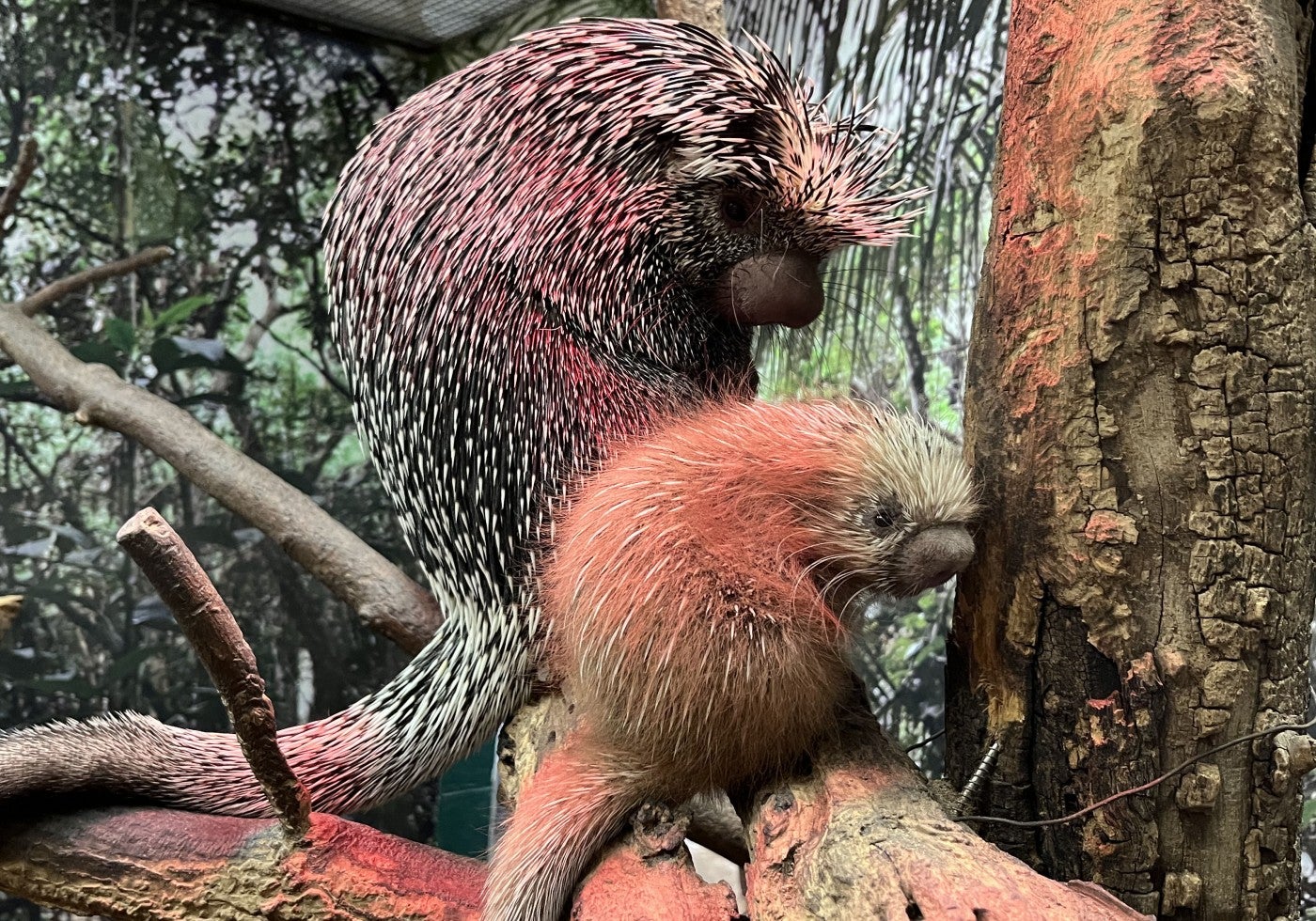
Does Fofo have a favorite toy?
We provide enrichment to both Beatrix and Fofo every day, but we can’t say for sure whether he has taken any interest in it since they are active at night when we are not here to observe them. In general, they favor enrichment items that contain treats, such as wood feeders or boxes they can forage through.
I want to help Prehensile-tailed porcupines! What can I do?
Similar to other species that are native to the forests of South America, much of the prehensile-tailed porcupine’s native habitat has been cleared for agricultural use; but, you can help protect this species! When you shop for furniture and other décor made of wood, check that the product is sustainable and doesn’t contribute to deforestation before you buy.
And, spread the word by introducing your friends and family to our prehensile-tailed porcupette, Fofo, along with the rest of his family—mom Beatrix, dad Quillbur and grandmother Bess! Learning about these animals and gaining an appreciation for them can inspire others to think about the impact their day-to-day purchases can have on the planet we share with these precious porcupines!
This story appears in the March 2022 issue of National Zoo News. Have you met our golden-headed lion tamarin twins? Check out our keeper Q+A about these mischievous monkeys!
Related Species:

